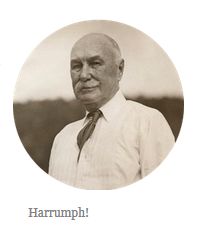Golf as a WASP Ethnic Pride Parade
By Steve Sailer
06/04/2018

Today, I got my first look at the final pieces of the now-complete Gil Hanse-led restoration/renovation at Sleepy Hollow Country Club, and the results are incredible. Simply put, there aren’t 50 better courses in the US than Sleepy. And there may not be 25. It’s that good. pic.twitter.com/8eoYBMYHHL
— LinksGems Golf Photos (@LinksGems) May 31, 2018
High-end golf has kind of given up on the Tiger Woods Era dream of diversity and the mass market, and is turning into a sort of WASP ethnic pride parade.
At present, the rather artificial-looking courses built by the strong-willed pioneer American designer Charles Blair Macdonald a century ago are the height of chic once again, after being completely out of style in the 1950s-1970s. Golf course architecture is an art form that follows its own trends in fashion.
A lot of money is being spent to restore Macdonald’s hard-edged designs, such as his 1911 course along the Hudson River at Sleepy Hollow, a robber baron country club founded by Rockefellers, Astors, and Vanderbilts.
Macdonald was basically Montgomery Burns with attitude. He vociferously argued that he was simply bringing America the time-tested best golf holes of the sand dunes courses of Scotland, and was following nature’s lead.
But Macdonald’s engineered classic courses don’t really look too much like Scottish courses. This radical 16th hole at Sleepy Hollow more resembles the 18th hole on a miniature golf course hole: if you get the ball into the punchbowl crater in the middle of the square green you have an easy putt, but woe unto you if you miss.
One theory is that Macdonald’s squared-up designs were aesthetically influenced by a taste for the look of old Civil War battlefields, which had lots of linear grassed-over trenches and breastworks.
In the current era, tradition comes first, and if that’s what Charles Blair Macdonald designed, then that’s what sophisticated golfers like these days. (You can see what this hole looked like in its timid later 20th Century version before its recent restoration to Macdonald’s original design here.)
